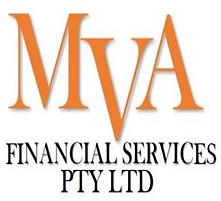Why does my broker ask for so much documentation?
- MVA Financial Services
- Apr 23, 2020
- 3 min read
No one likes paperwork; however, providing your broker with the right documentation will save you time and money.

What information will your broker ask you to provide?
When you ask to enlist the services of a broker, they will probably ask you for the following documentation:
● Identification, including photo ID such as driver licence
● Income verification documentation such as recent payslips
● Birth certificate, if you are applying for a government funded first home owner grant Depending on the lender or bank you would like your broker to apply to for your loan, you may also be asked to provide:
● A recent PAYG summary
● A notice of assessment from the Australian Taxation Office
● Tax returns
● Proof of your contribution toward the transaction, such as savings or deposit statements
● Transaction Account statements to confirm living expenses
● Purchase contracts for a home loan, including building contracts, or plans if building
● Existing liabilities and mortgage statements
Why is this information important?
While it may seem that you are climbing the Mount Everest of paperwork, a broker will ask for all of this to ensure they are protecting you and that they get the best possible deal.
“Gathering various forms of documentation allows brokers to do a fact find, which is an important part of the loan process,” explains Mortgage Consultant Justin Lidgerwood from Mortgage and Finance Solutions.
This is the process by which brokers ensure that they match a client with a loan that helps them achieve their property goals, whether that is buying a home to live in, one to renovate and sell, or a long-term investment, and one that matches their financial positions. “Brokers do not want to put prospective loan clients into a situation where they cannot afford to repay their new loan commitments,” says Lidgerwood.
Will a bank ask for the same documentation?
If you apply for a loan with a bank that you do not currently have an account with, they will require much of the same information as a broker would.
Although borrowers may be able to avoid the paperwork by applying for a loan with their current bank (which will already have a lot of information on file), this means being constrained by the products that bank offers and risking missing out on a great deal.
“The benefit a broker has compared to an individual bank, is the broker has access to most banks and lenders across Australia,” Lidgerwood says. “Lending policies and pricing vary greatly across the lending market and some clients do not realise this, so why waste time going direct to a bank?”
It is also likely to mean missing out on having a broker match a loan to longer-term goals, rather than just a purchase price and interest rate.
Saving you time and money
Lidgerwood says a broker can usually tell a client within 10 minutes whether they have a chance of obtaining loan approval.
“Brokers have access to bank loan affordability and serviceability calculators, which show clients’ potential borrowing capacity,” he explains. “Depending on the size of the funding required, and the loan to valuation ratio, these days the banks are extremely competitive, and we can quite often get a better price deal than advertised.”
If a client is not yet in a position to obtain a loan or has a credit issue on their file, such as a default, having a broker on-side can be invaluable.
“We can guide the client with a view of getting default removed, or waiting until the default drops off the client’s credit file,” Lidgerwood explains. “Most brokers are accredited to gain access to client’s credit files these days, which is an extremely important issue due to the banks’ risk scoring.”
In a nutshell, a broker will shop around to get the best possible deal for you, their client.
MFAA accredited finance brokers are the experts in finding you a loan that matches not just your finances, but your future plans.
2020 Copyright of MFAA (Mortgage & Finance Association of Australia)

Comments